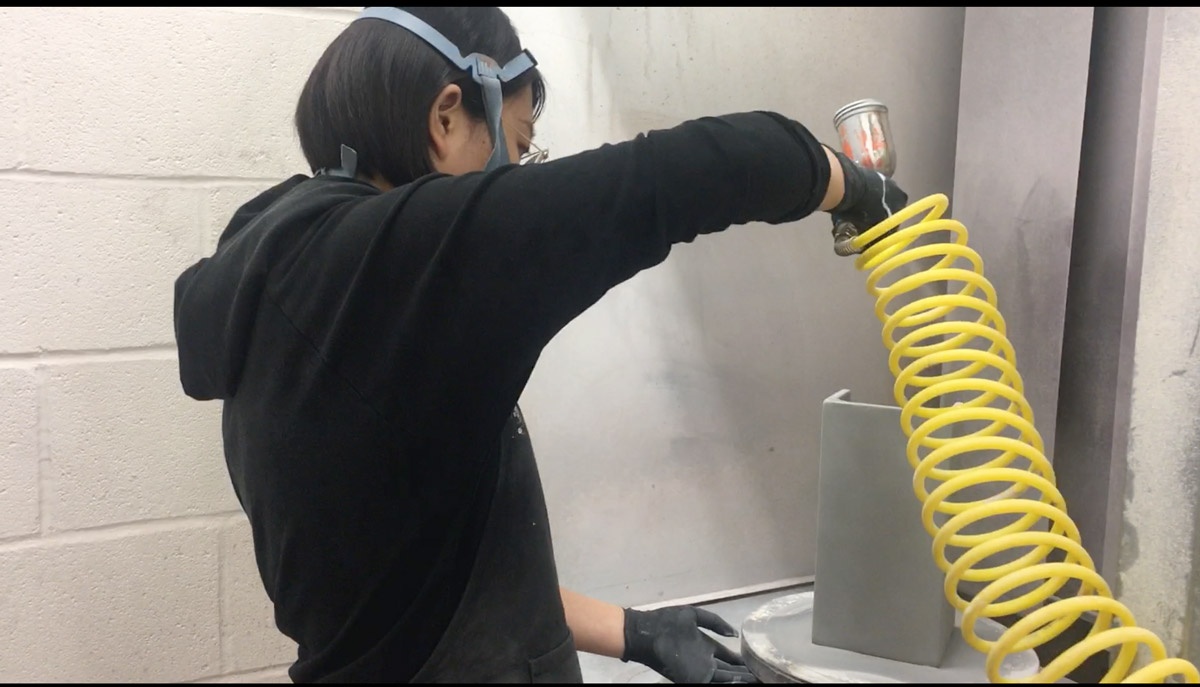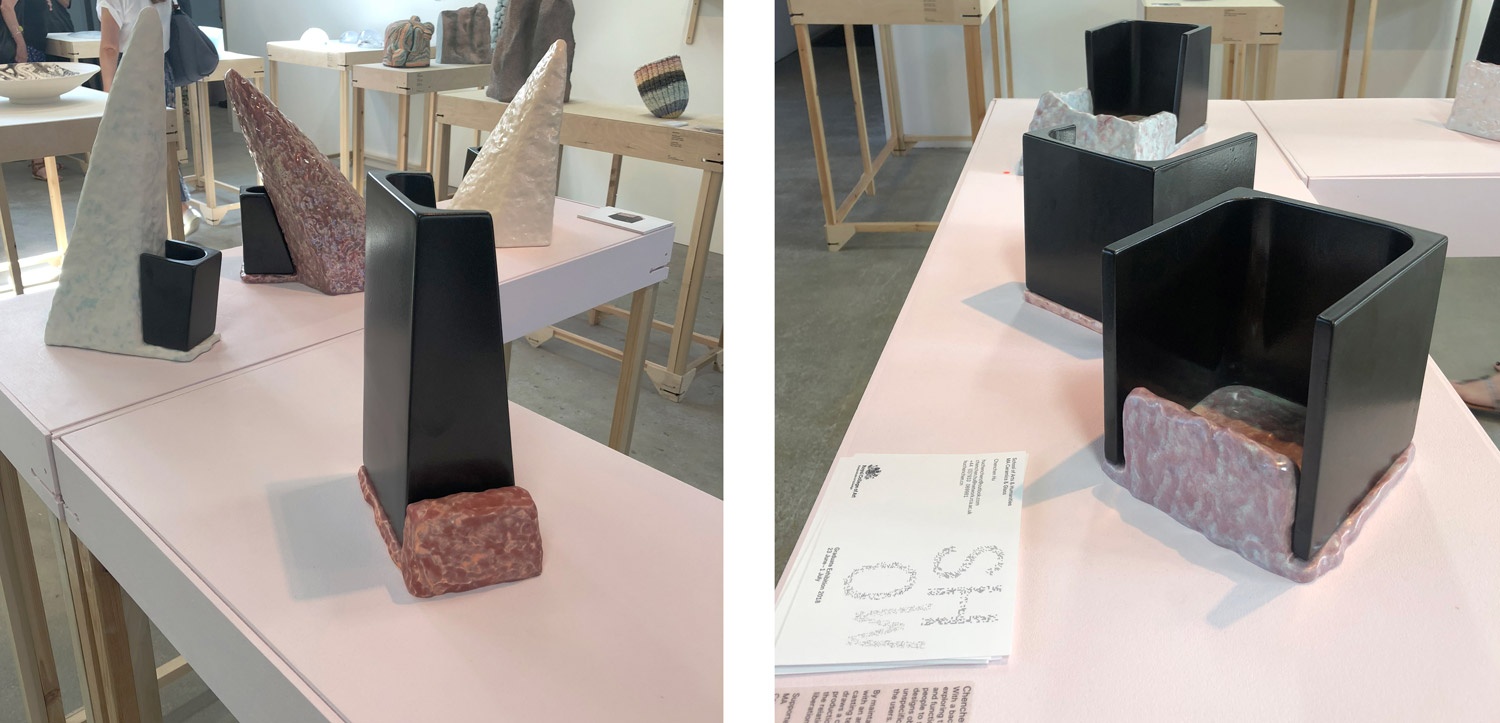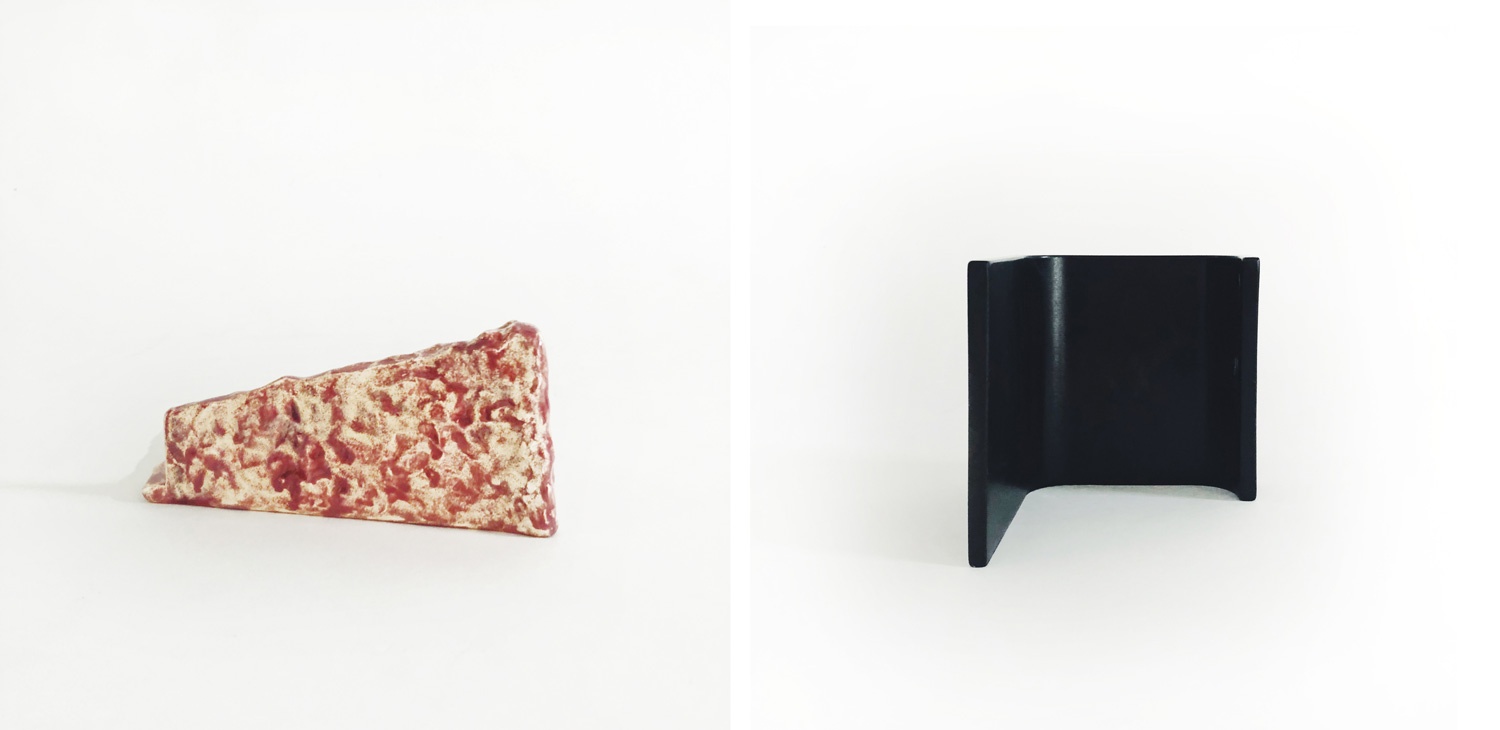“By maintaining unity of form and the colour black, paired with an array of colour use, and the mixture of slip-casting technique versus hand-built texture, my work draws a conversation on the contrast between mass production and craftsmanship in earthenware ceramics, as well as the relation between conscious control and unexpected liberation.”
Chenchen Hu worked as a ceramic product designer with a BA degree in Product Design at China Central Academy of Fine Arts and an exchanging experience at Design School of Kolding Denmark. With a Master’s degree in Ceramic and Glass at the Royal College of Art, she is exploring the relationship between ceramic sculptures and functional objects that can provide a chance for people to shift their roles between viewer and user, so far she has developed her personal language in ceramic making.

In Half & Half series, Chenchen has left the decisions for the audience to determine how to view or use an object. Through a special design, she intends to make the function of her work undeciphered to leave room for the user to rethink the function and bring more potential to the work. By presenting an uncompleted shape, she wants to create an interdependent but independent relationship within the work.
Half & Half, Royal College of Art summer exhibition, 2018

By maintaining unity of form and the colour black, paired with an array of colour use, and the mixture of slip‐casting technique versus hand-building texture, her work draws a conversation on the contrast between mass production and craftsmanship in earthenware ceramics, as well as the relation between conscious control and unexpected liberation.

Every piece is made from 2 parts
All of the geometric shapes are made by slip-casting earthenware. After removing from the mold, Chenchen adjusts the outline of the work many times by refining the edges to create an absolutely flat outline. In order to maintain uniformity, she coats part of the series with matte black glaze. However, the other part of the series maintains the natural marks of hand-building by earthenware clay. The straight outline is actually formed by subtle curves. By doing this, it allows the glaze to produce multiple colours and visually interesting textures.
